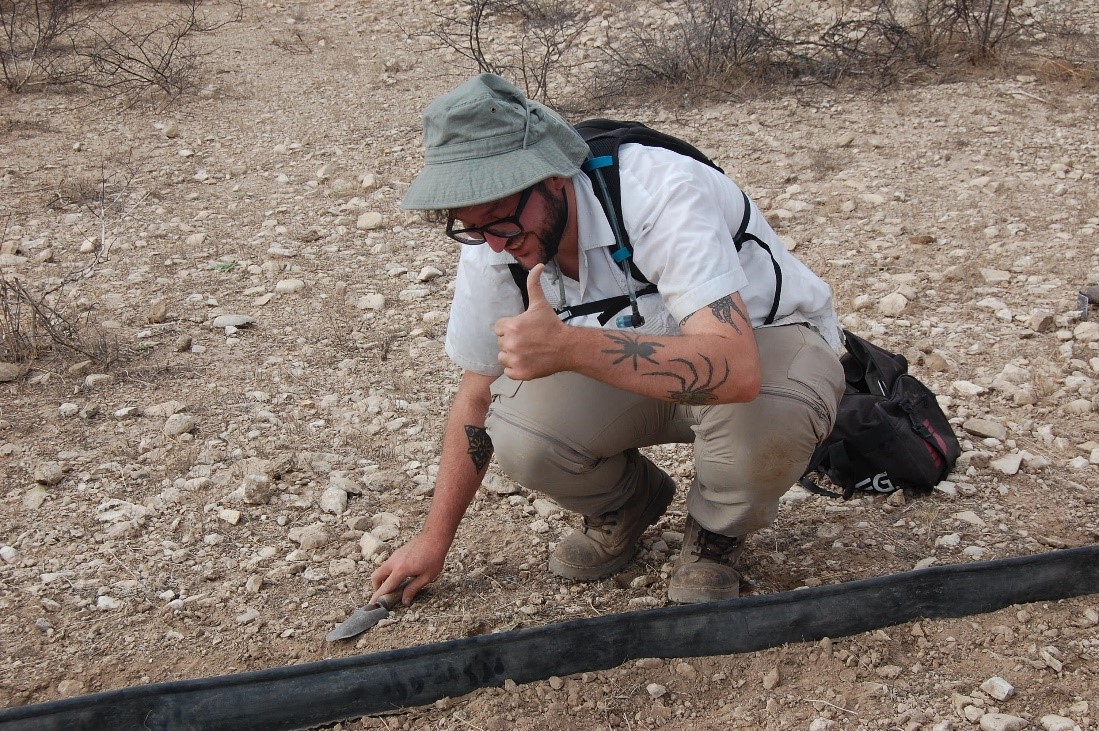
FALL 2023
Written by: Taran Volckhausen
Produced by: Maurilio Tapia
Finding camel spiders can be a bit of a challenge. Often misunderstood, these creatures lurk in the shadows of hostile, desert environments, generally only coming out after darkness falls. Reaching their remote habitat demands both time and financial investment, further complicating the study of these mysterious arachnids. Perhaps because of the camel spider’s strange, elusive nature and the challenge of studying them, these creepy crawlers have firmly grasped the attention and intrigue of a cadre of scientific researchers here at the Denver Museum of Nature & Science.
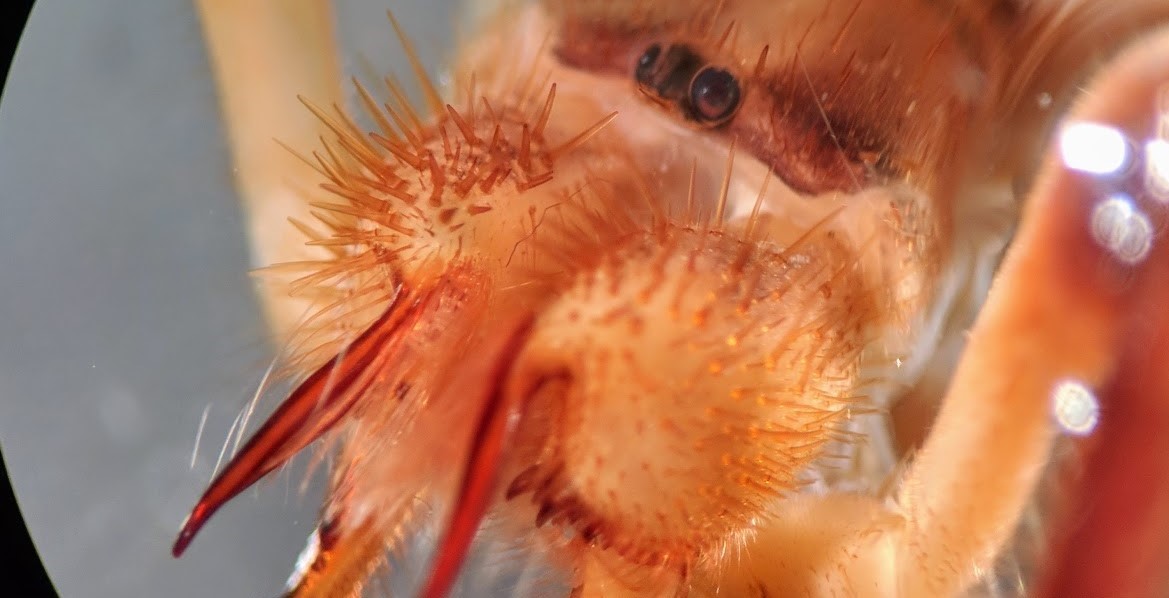
Close-up of a camel spider face (Photo/Ryan Jones).
The Denver Museum of Nature & Science houses one of the largest collections of camel spiders in the world. Senior Curator of Invertebrate Zoology Dr. Paula Cushing has led the Museum’s efforts to expand our knowledge on camel spiders, scientifically known as Solifugae, especially in Colorado and western United States. Over the past 20 years, the Museum has collected many specimens and identified new species during field expeditions.
None of this could be possible, however, without the support from donations and grants. In 2018, Dr. Cushing secured a grant from the National Science Foundation (NSF) which will continue to support the department to bring along graduate students to study camel spiders through 2024. Thanks largely to support from the NSF, the Museum’s arachnology lab is one of the primary labs in the world researching this challenging and intriguing group of animals.
Read more: North American Camel Spiders
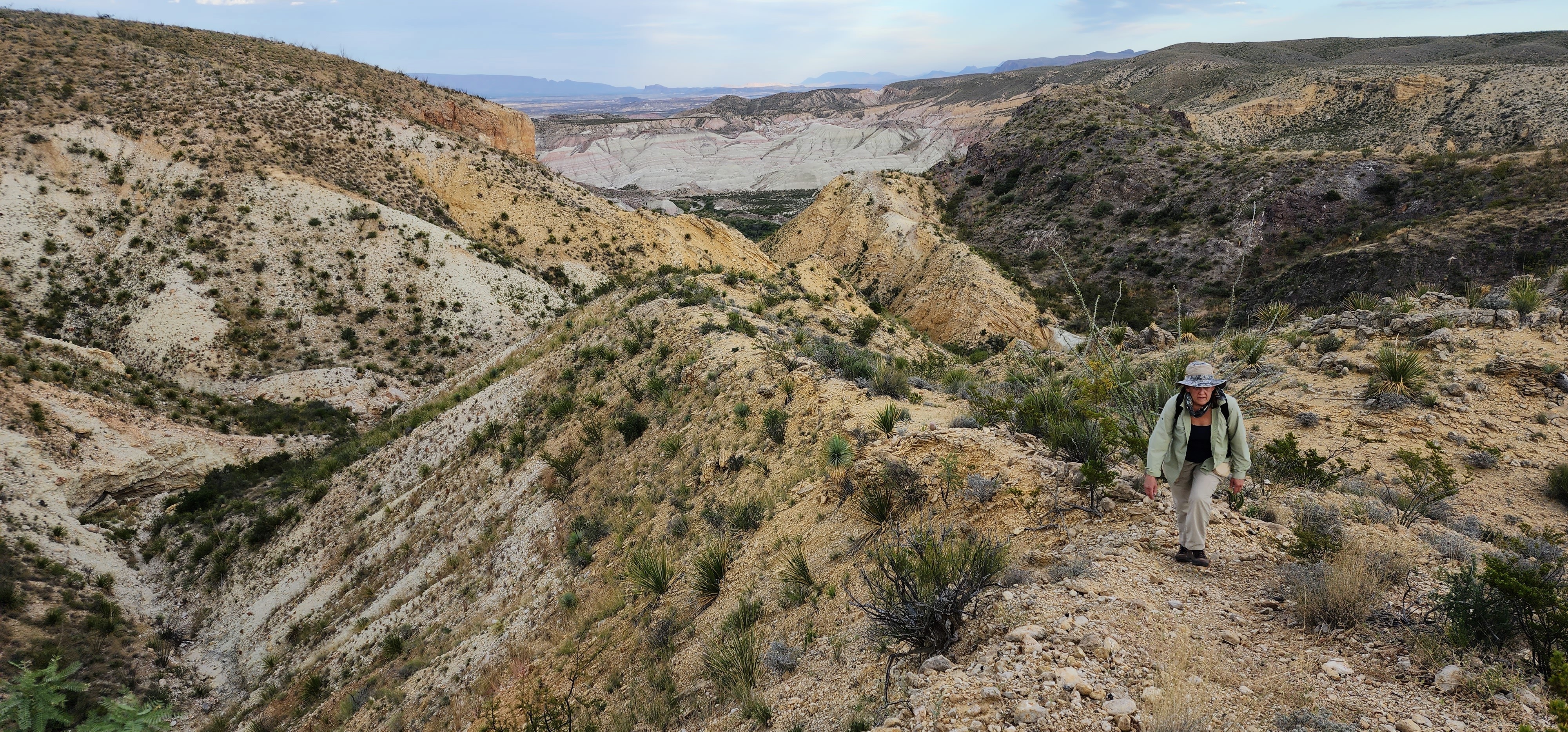
Paula Cushing emerges from the canyons at a site in the Chihuahuan Desert (Photo/ Rick Wicker).
Solifugae encompass more than 1,200 different species in the world, and more are being described all the time. Through the grant, the researchers and graduate students aim to use DNA sequencing techniques to comprehend relational links between different species, while also examining their anatomy. As Dr. Cushing pointed out, "DNA tells you it’s related, but what are the characteristics that we can see, like jaws, body and color patterns that can be used to differentiate different taxonomic groups?”
This grant has made it possible for the Museum to take researcher graduate students Ryan Jones and Goran Shikak to study camel spiders in the field. Their latest expedition took them to places like the Pueblo Grasslands and the Sonoran Desert. While working in temperatures exceeding 110-degrees Fahrenheit, the researchers copied the camel spiders they were studying — finding shade and staying low key until nighttime.

Graduate student, Goran Shikak, gives a thumbs-up as he installs a pitfall array to capture solifuges (Photo/ Paula Cushing).
Camel spiders vanish as the sun rises and are equipped with suction organs at the tips of their front appendages – called pedipalps – that help them scale smooth surfaces. Jones was drawn to study them owing to their peculiarity, while Shikak's motivations lay in his childhood memories from the Middle East where camel spiders were an important part of the desert ecosystem.
Erika Garcia, another graduate student, was also involved in the grant project and contributed to the Museum's camel spider research. Joining the lab in 2018, she recently earned her PhD under Dr. Cushing. Erika's curiosity about the factors driving speciation led her to investigate the genetics underlying their climate tolerance. Her dedication has been recognized with a Fulbright Scholarship and an NSF postdoctoral fellowship, which will soon see her in Israel. Garcia's journey into camel spider research comes from a passion to study the less popular, non-charismatic species that are too often overlooked and poorly understood.
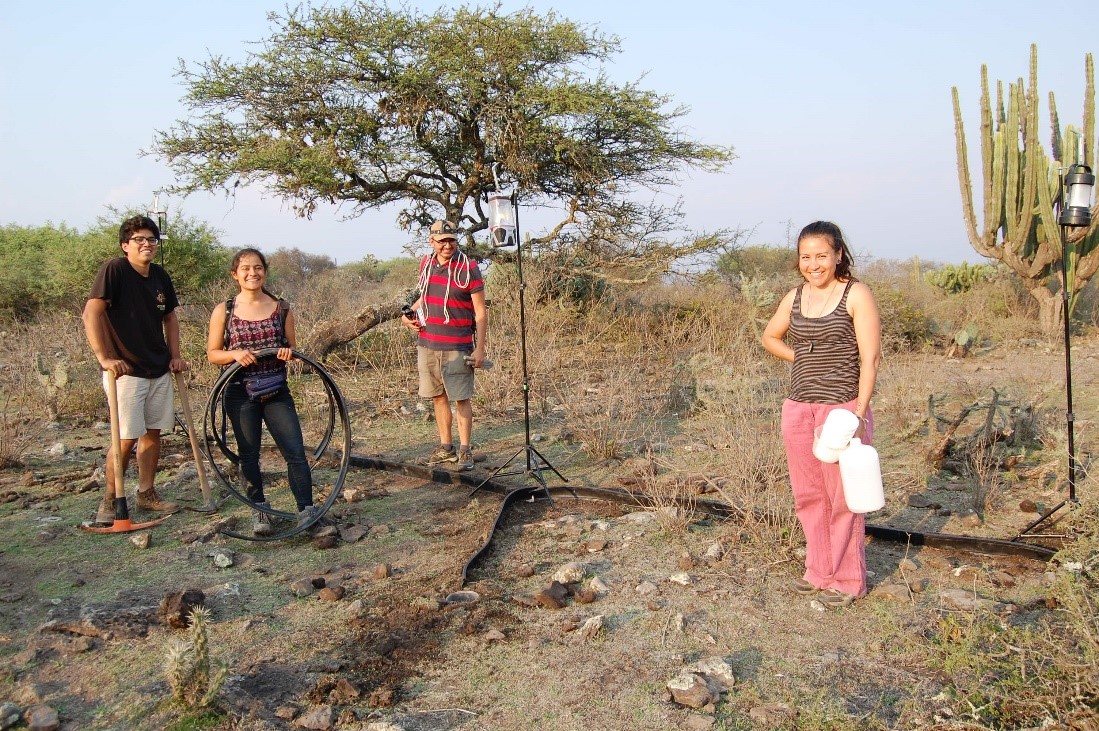
Student Jair Castillo, student Diana Laura Batista, advisor Dr. Edmundo Gonzalez Santillan and Dr. Erika Garcia, left to right, setting up pitfall trap arrays at a site in northern Mexico (Photo by Paula Cushing).
The growth of these graduate students into scientists isn't solely nurtured by grants and funding; it's also enriched by the unique lived experiences and expertise shared by veteran camel spider scientists that work at the Museum. Jack Brookhart has been studying camel spiders for more than half a century working as a long-time research associate at the Museum. His encounter with these creatures began with his 1962 master’s thesis. At the time, only he and two other individuals possessed significant knowledge about these arachnids. Brookhart’s research methods were both traditional and innovative, from flipping over cow pies to using lights to attract them.
Brookhart has been a constant source of guidance and expertise, even co-authoring papers describing new solifuge species with Dr. Cushing. After a career as a teacher, he has spent the past two decades mentoring young people at the Museum, and he’s pleased that the next generation of scientists will tap new technology and fresh passion to expand our knowledge on camel spiders far into the foreseeable future.
Grants and generous donations to the Museum provide the vital resources that enable graduate students to collaborate closely with Museum scientists. Together, they work to create informative exhibitions for the public, fostering a deeper understanding of camel spiders within the community.
At the heart of this initiative is the "Science News" exhibition, nestled in a corner on the Second Floor near the Discovery Zone. At present, camel spiders take center stage in this exhibition, captivating visitors with an immersive educational experience. Dr. Cushing's vision is to offer the public a comprehensive learning opportunity, complete with a bulletin board featuring images and information, an object case housing camel spider specimen, and a video screen showcasing the intriguing burrowing and mating behaviors of these enigmatic desert-dwelling arachnids. As a result, both children and curious adults have flocked to this exhibition, their fascination and perhaps a hint of awe driving them to uncover the secrets of these remarkable creatures.
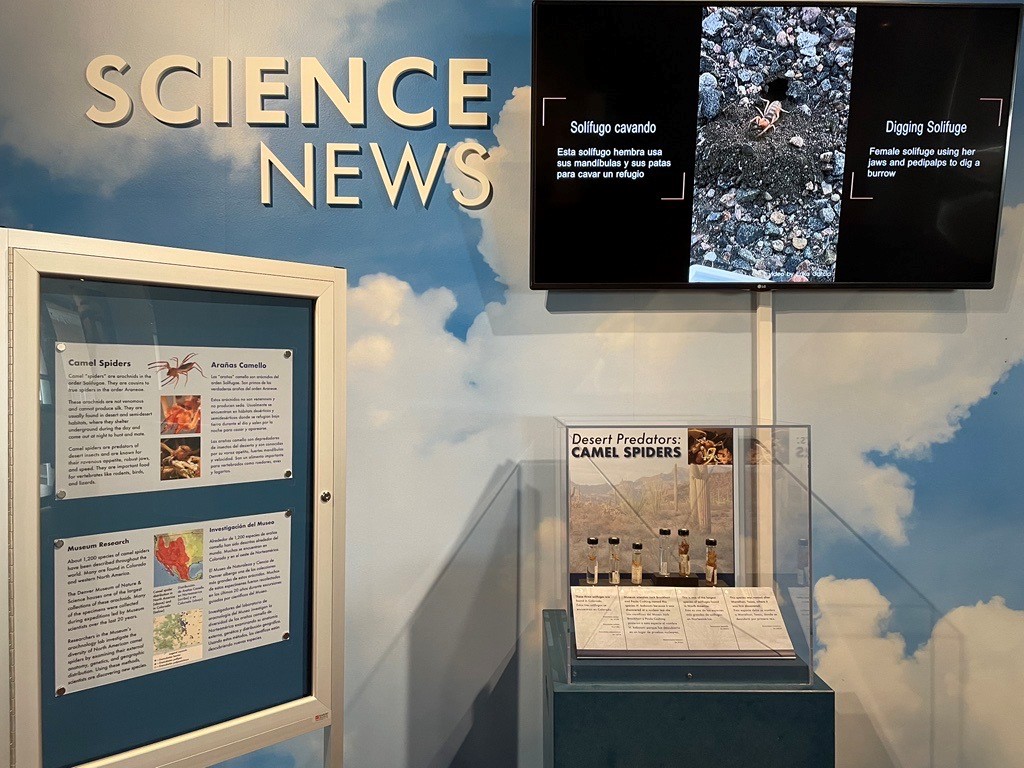
Science News exhibition on the Second Floor at the Denver Museum of Nature & Science showcases the camel spider research findings from the Museum’s arachnology lab. (Photo/ Taran Volckhausen)
Camel spiders, once hidden in the shadows of obscurity, are now stepping into the spotlight, thanks to the unwavering dedication of our researchers, the increasing public awareness generated through exhibitions like "Science News," and the much-needed grants and donations that make it all possible. As our graduate student researchers press on, one thing is clear: the world of camel spiders is still very much waiting to be explored.